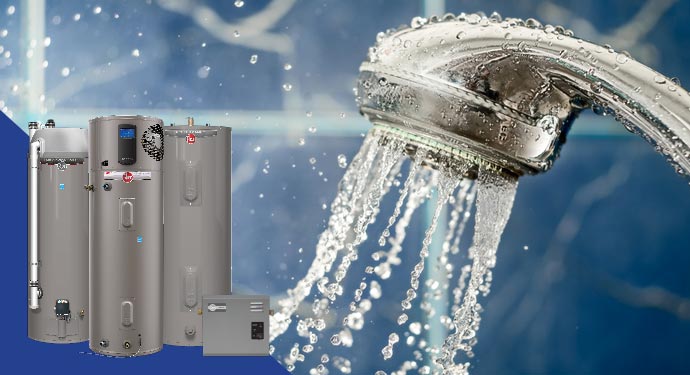
Different Ways To Control Heaters
June 7, 2018
The Lithe and Benign Addition to Manufacturing
July 10, 2019Water Heaters & Storage Tanks And Their Protective Coating


For a community, elevated water storage tanks are an integral element for water distribution. Besides being bedrocks in providing clean water, most times they become landmarks for the nearby areas. It means that maintaining them and protecting them the vagaries of life is essential. When left to nature, they can quickly corrode, which leads to leaks, poor water quality, and ultimately service interruption.
While water storage tanks are essential for whole communities, water heaters are pivotal for homes. They provide hot water and act as storage units for it. Like elevated storage tanks, water heaters also require proper protections from corrosions. A corroded water heater is neither energy efficient not durable. Therefore, a protective coating on them is essential.
Why do water heaters need a protective coating?
To understand the need for protection, first, we need to grasp what they are made of. Most water storage tanks and heater are manufactured from one of the following three products:

a) Copper
b) Stainless steel fabrication
c) Thermoplastic or polymer
Copper is an excellent heat conductor, which implies it loses heat very fast and causes the water to cool down. The loss of heat is a disadvantage against copper tanks. Stainless steel fabricated water heaters have better temperature insulation, which means they trap heat. The issue with both these materials is that they are corrosive, which necessitates an anti-corrosion coating. The thermoplastic doesn’t corrode, but it requires insulation to ensure that the heat doesn’t dissipate from the tank too quickly.
Since all three materials have an issue, Stainless Steel is considered the best option out of them. It holds heat and only requires a simple protective coating against corrosion.
What kind of coating is needed for a stainless-steel fabrication tank?
A water tank or water heater stores water for future use. The time may range from minutes to days, but the effect is the same. Over time, the tank gets corroded, which impacts the life of the water, negatively. To prevent corrosion of the tank, the inner surface is coated with a material that safeguards. The coating is strong enough to avert corrosion even when the water is warm or hot. Presently, the market is full of protective coating materials for water storage tanks and heaters. Moreover, the techniques used by water heater manufactures also vary.Check Here about more details of stainless steel fabrication tank.

Most often, stainless-steel tanks are fused with processed glass on the surface. This layer of glass has different names and can be made with many techniques. The basic steps of the process include:
a) Glass powder is applied to the steel.
b) The tank is then heated to convert the power into a glass coating on the inner surface.
A glass-coating is an effective technique to combat corrosion. To make the tank even more resistant to corrosion, sometimes polymer coating is created on the surface. A polymer is a synthetic material somewhat similar to paint. It is applied using a different method than the glass-lining, but the outcome is the same. The stainless-steel tank or heater becomes corrosion resistant.
Theoretically, a polymer coating is better than a glass or enamel layer. The reason being that glass-linings get damaged after extended and persistent use. In comparison, a polymer coating gives more extended protection. Yet, it is glass-lined storage tanks and heaters that are more commonly found.
A point to be noted is that water storage tanks face the threat of corrosion on two fronts – the inside and the outside. Both environments are different. Thus, the procedure or step needed to protect both of them has to be slightly different. While it is entirely acceptable to put a layer of coating on the exterior part of the tank, the inside surface required a more careful and detailed application of protection.
To sum it up, all water storage tanks and water heaters require protection from corrosion. Once a stainless-steel tank is corrosion-resistant, it gains three pivotal benefits:
• It has an extended life.
• It needs fewer repairs.
• It necessitates fewer operating expenses.



